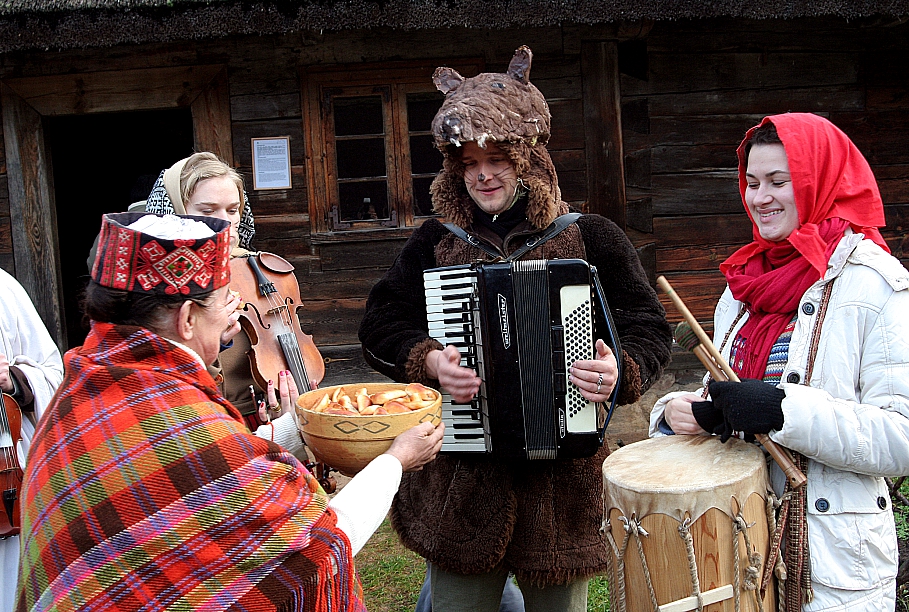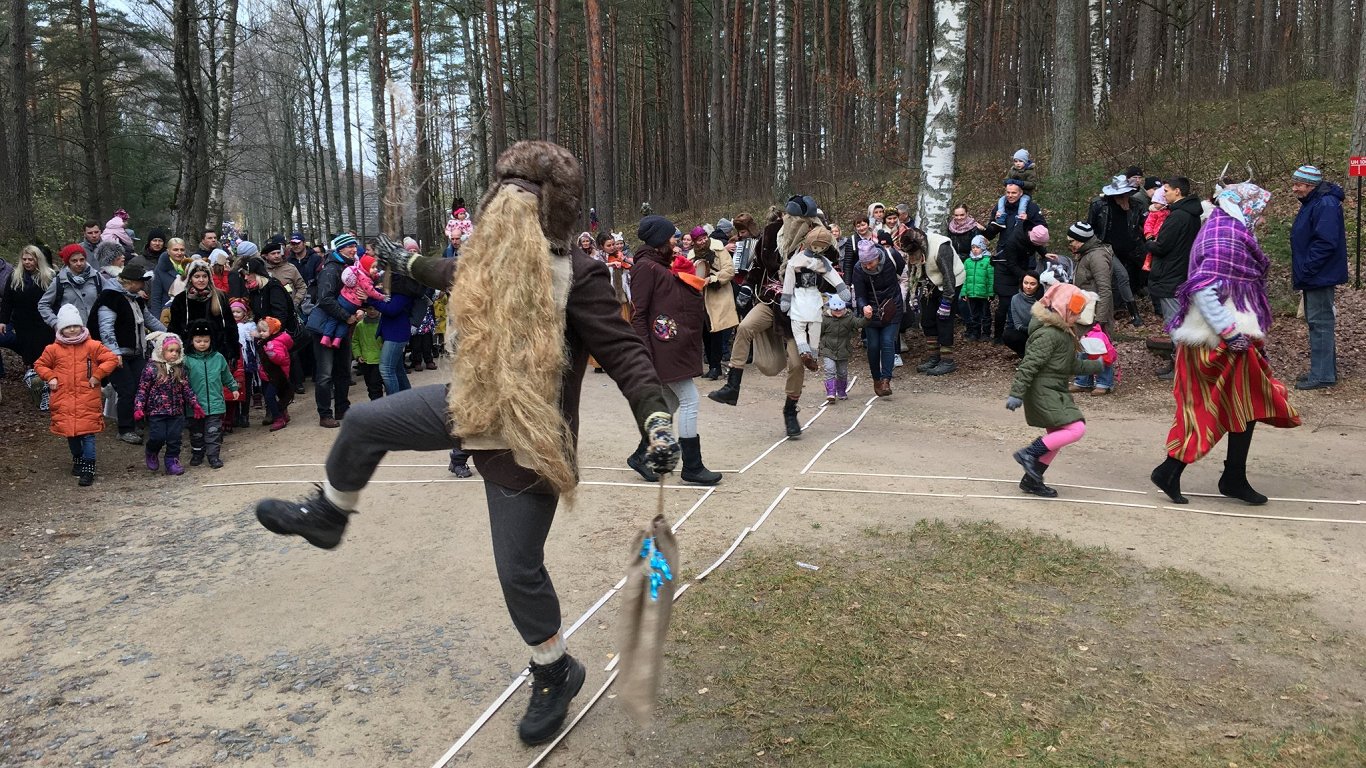Mārtiņdiena is the mid-point between the autumn and winter festivals, and traditionally marked the deadline when the field work was finished and the long winter was ahead. Celebrating Mārtiņdiena was (and is!) important to help ensure luck and prosperity for the coming year.
One particular ancient ritual involved the sacrifice of a rooster – and as a reslt Mārtiņdiena is still associated with the symbolism of roosters.
In 1832, K. Schilling, from Tirza, shared stories about the celebration of St. Martin's Day in ancient pagan traditions: "A couple of decades ago, St. Martin's Day was marked in this manner. The owner took a rooster, took it to the horse stable, stood next to one horse and raised the rooster in a circle around the horse, facing the sun, not away from the sun. When this was done with all the horses that were in the stable, then the owner killed the rooster."

This was believed to gain protection for livestock. The roosters were cooked and eaten by the family. In later times, the goose became more popular – it is believed that it was borrowed from German traditions.
Other traditions involved dressing in strange and grotesque costumes (a bear, a goat, a crane, a wolf, haystacks, and death were among the most popular forms) and going from farm to farm singing and playing jokes in exchange for treats from the householders – something with clear parallels to modern trick-or-treating at Halloween.
As with most seasonal waypoints in the Latvian calendar, the weather on Mārtiņdiena is supposed to give a guide to the future. Here are a few examples:
- If it's freezing on St. Martin's Day, it will be warm around Christmas.
- If St. Martin's day is nice and clear, then there will be a big frost in the winter.
- If there is snow on the roofs on St. Martin's day, it will be a long winter.
- If there is frost on the trees on St. Martin's Day, there will be plenty of garden fruit.
- If St. Martin's day is foggy, then the winter will be warm.
- When green leaves are still visible on the trees and bushes at St Martin's day, next year there will be few green leaves around Midsummer.
Divination of the future doesn't only apply to climatic matters, either. A special part of Mārtiņdiena divination is the effort of unmarried daughters to find out their futures. In one suggested exercise, on St. Martin's Eve, each daughter places a handful of grain on the ground, brings a rooster into the room and lets it loose. Whichever grain the rooster pecks at first will show the first daughter to get married.
As usual with ancient pagan celebrations, Christianity also makes some claim to them. In the Christian canon, Mārtiņdiena is the memorial day of Bishop Martin of Tours (336-397) and the birthday of Martin Luther, though there is less fun with roosters and dressing up in both these cases.
Of course, Mārtiņdiena is also the name's day for people called 'Martins' and 'Mārtiņš' (as well as Markuss, Marks and Mārcis). The Central Statistics Bureau took the chance to point out how the popularity of 'Martins' as a name has increased in recent years while 'Mārtiņš' has decreased.
🐓Mārtiņam gaili kāvu
— Statistics Latvia (@CSB_Latvia) November 10, 2022
Sarkanām kājiņām,
Lai guntiņas nevajaga,
Kumeliņus barojot. /T.dz./
Mārtiņš vs. Martinshttps://t.co/PKTRpM8yhA pic.twitter.com/lsMLzR4zYT


























